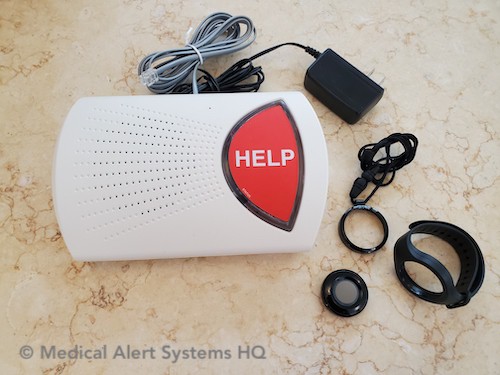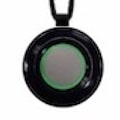Last Updated on June 28, 2023
Medical alert systems for landlines allow seniors to reliably connect to a monitoring center through a traditional home phone line. For homes with weak or no cellular signals, these systems allow seniors and others to get help through a landline.
Skip to see the Best Recommendations
Why These Reviews
These reviews aim to help our readers choose the best landline medical alert system for their needs. In terms of background, my team and I have tested both landline and non-landline medical alert systems extensively (video evidence). These reviews are based on our hands-on product experiences, test results and research. It contains original data and insights, going beyond a review of the companies’ official sales messaging. Let us know if have any feedback or help. Thank you for stopping by.
What are Medical Alert Systems for Landlines?
Medical alert systems for landlines dial out to the emergency monitoring center through a home telephone line. A landline medical alert system comes with two primary components:

1. A base unit with a phone jack (or socket) to plug in an existing home telephone line. This unit contains the emergency call dialing mechanism, speaker, and microphone. The base unit is also referred to as the base station or base console. It is about the size of a phone answering machine.
Connectivity: These base units will work with tradition Verizon or AT&T landlines – analog phone lines known as Plain Old Telephone Service (POTS). They will also work with newer digital phone lines like VoIP and Cable phone lines.
2. A wireless transmitter button, to activate an alert call. This is the help button that the senior or system wears with a lanyard or wristband.
These buttons are very lightweight (about 0.5 to 0.8 oz) and comfortable. They typically come with 2 to 5 years of battery life and do not need recharging. When the time nears for a replacement, most medical alert companies will reach out to assist their customer.
Let’s illustrate this through a few of the best landline systems on the market today.
Best Medical Alert Systems For Landlines
1. Bay Alarm Medical SOS Home – Landline Version
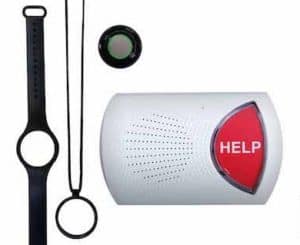
Questions? Call toll-free 1-855-397-9964 or visit Bay Alarm Medical’s website
Bay Alarm Medical‘s SOS Home medical alert system with landline connectivity comes with a base unit and a paired transmitter button to activate an alert. The base unit measures 7.8″ x 4.8″ x 1.8″, which is about the size of an answering machine. The round transmitter button is about 1.5 inches in diameter and weighs a really light 0.6 oz.
There are two ways to activate an emergency alert: 1) By pushing on the large red Help button on the base unit, or 2) By pushing on the small round help waterproof button that is worn either with a lanyard or a wristband.
SOS Home Landline Test Call Video
We have tested the SOS Home landline system and found that it provided an average response time of 56 seconds. To demonstrate, here is an actual video record where I tested the help button and received a response from a Bay Alarm Medical agent in 41 seconds.
Year-End Special Sale!: FREE Month and FREE Shipping on Select Plans + Up to 20% OFF Mobile Devices (From $49.50). Call 1-855-397-9964 or get started online.
The SOS Home Landline’s under-a-minute average response time compares well with other top-tier landline systems (example). For an even faster response time, they have a cellular non-landline version that performed at 21 seconds average when tested (SOS Home cellular).
In addition to a fast response time, there are more decision-making factors. Consider the following when evaluating the Bay Alarm Medical SOS Home as a suitable medical alert system that works with your landline.
Pros
Certified Monitoring – Bay’s US-based monitoring service meets UL and TMA Five Diamond industry standards.
Backup Battery – Although the base unit is plugged into a power source all the time, backup battery life is still meaningful in case of power outages. Bay Alarm Medical advertises that their landline in-home base unit has a backup battery life of up to 32 hours.
We put our unit to the test, and saw that backup power lasted past 32 hours. Some base units do not perform to their advertised levels, but Bay Alarm’s unit did not disappoint.
Long-Range – We tested the system’s range and found that we could successfully transmit a help signal from over 160 feet away. That’s over the width of a football field (160 feet). For most homes, this is much longer than the distance from one end to another. According to Bay Alarm Medical, their system boasts a long-range button of up to 1000 feet.
What also stood out was their range test feature. Most base units do not have this, making it difficult for the average user to test range performance within their homes.
Low Cost – The monitoring cost of $24.95 per month is very competitive. The company also offers hassle-free month-to-month billing with no minimum commitment term required.
Cons
Does not work when away from home – As a landline system, it will not provide coverage when you are away from home. We tested and found that the activation range between the help transmitter button and the base unit maxed out at about 250 feet.
However, if you have a need, Bay makes it affordable to add on a separate SOS Mobile unit (cellular). They offer a steeply discounted price when you bundle it in. In comparison, most companies are unable to provide that flexibility.
Bay Alarm Medical SOS Home Summary
Overall, Bay Alarm Medical’s SOS Home landline system is our pick for the best landline medical alert system for the following reasons: Their system performed well when tested; their agents answered promptly, the activation range was long, the base unit’s speaker and microphone were clear and sensitive across rooms, and it showed good backup battery life when tested.
To cap things off, the company is able to offer customers all these at a low, competitive rate, and they are easy to work with.
Questions? Call toll-free 1-855-397-9964 or visit Bay Alarm Medical’s website
2. Medical Guardian Classic Guardian Landline System
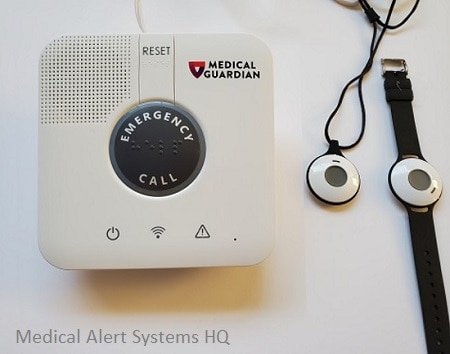
Questions? Call toll-free 1-800-311-6142 or visit visit Medical Guardian’s website
Medical Guardian is a well-recognized top brand name in the medical alert industry. Like most top-tier companies, they also offer a landline system – Classic Guardian.
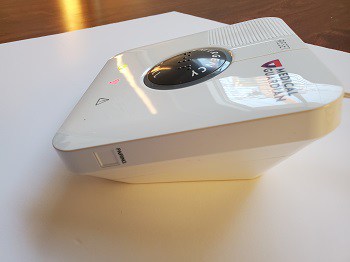
As illustrated in the above photos, the Classic Guardian comes with a large Emergency button in the middle of the base unit. Additionally, there is a paired long-range transmitter button that will remotely trigger an alert call through the base unit. The button is waterproof.
We’ve tested Medical Guardian‘s monitoring service and found that their agents answered emergency calls quickly. According to PCMag, Classic Guardian’s average response time was 46 seconds when they tested it. This is seconds faster than Bay Alarm Medical’s landline system (see review and video).
Pros
Certified Monitoring – Medical Guardian offers customers monitoring that is certified to high industry standards. They are UL listed and TMA Five-Diamond certified.
Long-Range – We were able to remotely activate an alert from a long distance away, beyond the length of a football field (160 feet, not square feet). That’s more than enough coverage for a 2500 square feet home. Medical Guardian advertises a super long range of up to 1300 feet for their CLassic Guardian system.
Voice-Activated Wall Buttons – Optionally upgrade your system to include separate voice-activated wall buttons that can be placed in the bathroom, at staircase bottoms and other strategic areas.
Cons
In-Home Coverage only – As a home phone line system, coverage is only limited to your home. Any emergency signal coming from your system will be tied to your home address.
In addition, we also tested pushing the help transmitter button from several spots away from our test home. These were from spots more than 500 feet away from the base unit. Each of these signal transmissions failed.
Backup Battery – We are unable to confirm that its backup battery will go up to 32 hours as advertised.
Classic Guardian Landline Summary
Overall, the Medical Guardian Classic Guardian is a good landline system for the following reasons. Medical Guardian is a top-tier medical alert company that offers certified monitoring services. Their agents respond quickly. Its landline base unit has a long-range button for whole-house coverage, and the base unit’s sensitive speaker and microphone facilitate clear, two-way communication.
Cost-wise, the company is not the least expensive, but their pricing is still competitive. If you do get this Classic Guardian system, be sure to test out your base unit’s backup battery and make sure you are satisfied with it.
Questions? Call toll-free 1-800-311-6142 or visit visit Medical Guardian’s website
3. LifeFone At-Home Landline
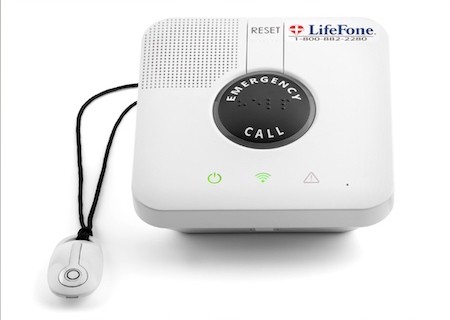
Questions? Call toll-free 1-877-352-1292 or visit LifeFone’s Official Website
LifeFone is an experienced medical alert provider of medical alert systems. Their At-Home landline medical alert base unit comes home phone line socket. It is paired with a waterproof help transmitter button that is worn around the neck or with a wristband.
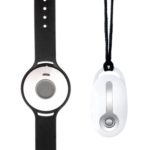
Product users can activate an emergency call either through the curved Emergency button on the base unit, or the help transmitter button. Their landline system base unit is the same as Medical Guardian’s Classic Guardian. Both are based on the Essence Care@Home ES7502HC PSTN base unit.
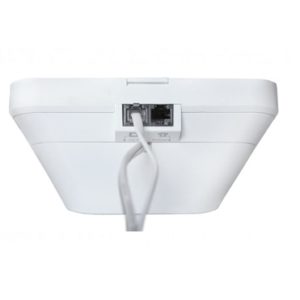
LifeFone At-Home Test Call Video (Cellular)
We have tested LifeFone’s At-Home cellular system and found an average response time of 47 seconds. Both their cellular and landline base units are two versions of the same Essence ES7502HC base unit model. This is for demonstration purposes only to show how the system works and that LifeFone’s care agents are ready to answer calls quickly.
Here the video recording of a test call we made through LifeFone’s At-Home medical alert system.
Pros
Experienced Medical Alert Provider – LifeFone is an experienced medical provider with decades of industry experience. Just like Bay Alarm Medical and Medical Guardian, they offer 24/7 US-based certified monitoring.
What distinguishes them is that they operate and manage their main TMA Five-Diamond certified monitoring center in-house. LifeFone also offers the extra option of Daily Check-in Calls, something that most companies do not.
Long-Range Button – We were able to remotely activate an alert from a long distance away, beyond the width of a football field (160 feet). The advertised range is up to 1300 feet.
Cons
In-Home Coverage Only – Like any at-home medical alert system, the LifeFone At-Home with landline connectivity will not work beyond the home.
Backup Battery – Additionally, although its backup battery is advertised to last up to 32 hours, we have trouble establishing this. This is something we recommend testing out for yourself.
LifeFone At-Home Landline Summary
Overall, LifeFone’s At-Home Landline system is a useful product from an experienced medical alert provider. Their system offers an extended activation range, and care agents answer calls promptly. LifeFone’s cost and terms are fair, offering additional discounts if you prepay ahead of time.
With a 30-day money-back guarantee (minus shipping costs) and pro-rated refunds, the company makes it easy to get started and thoroughly check their system out at home.
Questions? Call toll-free 1-877-352-1292 or visit LifeFone’s Official Website
Landline vs. Non-Landline Systems
Both landline and non-landline systems have their advantages and drawbacks. If your cellular coverage, or your in-home cellular coverage is spotty, then a landline system provides a better connection. Here is a comparison of the main factors:
Cellular Coverage – If you live in an area with poor cellular coverage, a traditional home phone line system would be more reliable and offer higher audio quality. This is perhaps the most important reason for sticking with a landline medical alert system.
Cost – Non-landline systems cost $5 to $10 more compared to a landline system. Their monthly cost includes the cellular connectivity. Non-landline cellular systems do not work through a personal cell phone or cell phone plan, so neither is required.
Ease of Installation – Non-landline medical alert systems are easier to install. They come with working cellular capabilities built into the base unit, so all we had to do was turn it on. With a landline system, we had to plug in two phone cords to attach the base unit to the wall jack and to the telephone.
Without the cord tethering, non-landline at-home base units are easier to move from one room to another, if needed.
Coverage Away from Home – Landline systems are meant for at-home use only, even if they are advertised as having “long range.” For away-from-home medical alert monitoring coverage, you will need a non-landline cellular device (such as this).
Medical Alert System for Landlines FAQs
Do medical alert systems require a landline to work?
No, medical alert systems do not require a landline to work. There are in-home and away-from-home medical alert systems with a built-in dedicated SIM card that enable connections through a wireless cellular network.
These systems do not require any extra input or cell phone connection. See examples of systems that do not require a landline to work. The concept of wifi medical alert systems is also worth exploring.
How do you connect medical alert systems to your landline telephone?
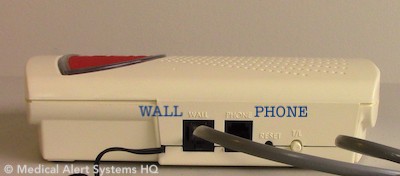
You will need to connect a phone cord between the telephone wall jack and the medical alert base unit. There is a socket on your base unit for the phone line, typically marked as “LINE” or “WALL.” One end goes to the wall, and the other to your base unit.
Next, you plug another phone cord between the base unit and your home phone. There should be another slot on your base unit marked as “PHONE.” One end goes to the socket labeled “PHONE,” and the other connects to your home phone.
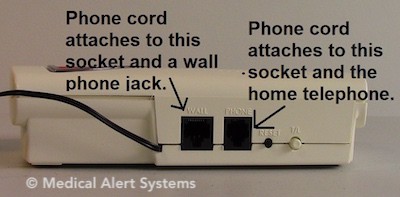
What happens if the home phone line is busy or in use?
To allow an emergency call through, the product user can set-up calling priority for their landline medical alert system by having a RJ31x jack or Line Grabber installed. These set-ups will seize the line and allow the emergency call to still dial through.
They can contact their medical alert provider and local phone company to confirm the right part numbers and codes. The installation should be done by a qualified technician and tested out.
Do medical alert systems for landlines work with VoIP, DSL, and cable phone lines?
Yes, in most cases, landline medical alert systems will work with regular VoIP, DSL (DSL filter needed), and cable phone lines. For example, most systems are compatible with digital fiber optic VoIP phone lines from Verizon FIOS and AT&T Phone (U-verse® Voice). This example test call above was completed through a Charter cable phone line.
However, medical alert systems are not compatible with voice-over-internet VoIP systems like Magic Jack and Ooma. To be safe, it is best to confirm with the medical alert company that their system is compatible with your digital home phone line.
Do landline medical alert systems work with Verizon Wireless Home Phone or AT&T Wireless Home Phone services?
Medical alert systems for home phone lines are not compatible with cellular-based home phone services like Verizon Wireless Home Phone or AT&T Wireless Home Phone. These Wireless Home Phone systems work through “boxes” that enable a standard home phone to connect to a cellular network.
To connect through Verizon Wireless services, there are Verizon medical alert systems that connect through Verizon Wireless directly. Similarly, there are AT&T medical alert systems that connect through AT&T Wireless directly.
What is a cellular adapter for medical alert systems that do not use a landline?
A cellular adapter is a separate box that will enable the use of your cellular phone connection with a landline-based medical alert.
It’s not a readily available accessory. Cellular non-landline medical alert systems come bundled with an internal SIM card to power their cellular connectivity. The connectivity is built-in, direct and ready to use without extra set-up steps.
Do medical alert systems for landlines have fall detection?
Yes, most medical alert systems for landlines offer optional fall detection. The medical alert base unit will be paired with a fall detection button that can sense if a fall has occurred. All of the best landline medical alert systems above offer fall detection.
See the Best Recommended Medical Alert Systems with Landlines
Disclosure: We receive referral commissions for purchases made (details).
Disclaimer: Our reviews are based on our actual experiences and research. This information is shared as is, without any warranties. We advise all readers to do careful due diligence before purchasing. Take time to speak with the company’s representatives or visit their official websites.
- Bay Alarm Medical In-Home Cellular Response Speed 46% Faster in 2023 - July 5, 2023
- Medical Alert Systems For Landlines - November 20, 2022
- The Truth About Long-Range Medical Alert Systems - May 1, 2022
In a hurry? Leave us your email, we’ll follow-up with the best tips.

